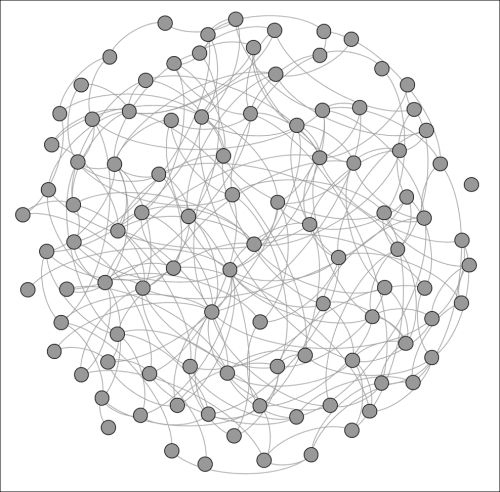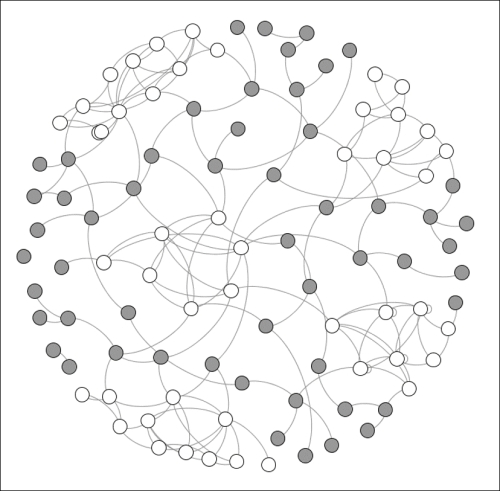As we noted earlier, homophily is an extreme form of clustering, where groups within a network are more likely to be highly interconnected within the group, but remain largely disconnected from the outside world. This can be driven by many factors such as geography, religious or political preferences, or perhaps some very specific shared interests that are restricted to a small segment of the overall network. In this section, we'll employ Gephi to illustrate a few examples of homophily and highlight the impact it has within the scope of the entire network.
What is critical to remember about homophily is the way it can restrict the flow of information, innovation, and even infection within a network. Since many individuals within specific groups have little exposure beyond the group, there is an increased probability that they will not have access to all the latest information and that they might be more reluctant to adopt new technologies (at least until others in their group do). On the positive side, they might be at lower risk for acquiring infectious diseases, especially if the homophily is related to physical patterns (remote geographic location, limited exposure to public places, and so on).
Now that we fully understand the importance of homophily within a network, it is time to identify specific cases within network structures. For this exercise, we will return to Gephi, and use some fictional small networks I have created for this purpose:
- Network A will represent a very homogenous small town population where a significant majority of the people have shared characteristics, resulting in very low homophily
- Network B will be a cross section of a mid-sized urban area where many residents have the same shared values, but where some smaller groups differ significantly on religious grounds and thus do not interact significantly with the majority of the residents
- Network C will be a subset of a large urban population that is home to multiple ethnic, racial, and religious groups that have tended to form their own enclosed communities
Here is Network A:

A network with no homophily
Notice the general connectedness across the network with little in the way of obvious groupings or clusters. The shared characteristics of this population have resulted in a homogenous network. Now let's take a look at Network B, where the population base is a bit more diverse:

A network with minimal homophily
Here, we begin to see some homophily at the lower left of the graph, which is shown by the white nodes. This cluster of individuals is highly connected within the small group (based on their religious affiliation), but many of its members have no connections beyond their local neighborhood. Information flowing into this part of the network will have to pass through the two or three individuals with some level of connectedness to the remainder of the network.
Finally, our big city network, where many diverse groups coexist, is shown as follows:

A network with high levels of homophily
We now see some serious homophily with five distinct groups that are each densely connected within their own neighborhoods, but have little in the way of external linkages. These groups have tended to self-segregate based on religious, racial, and ethnic characteristics. Information flow or product adoption now has a much higher friction level as it must pass through the influencers who are connected beyond the local clusters in order to reach other individuals within the group.
